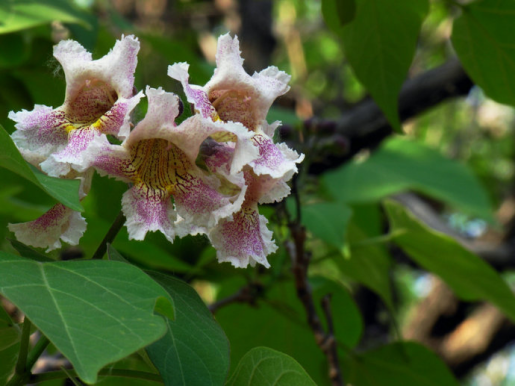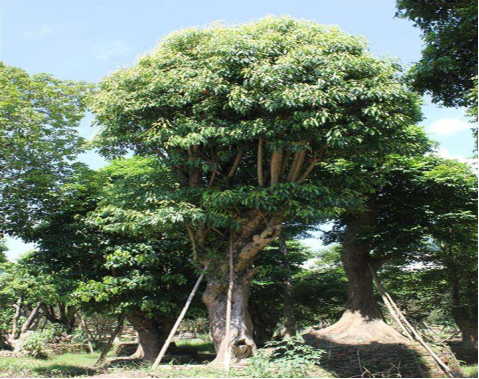Culture methods of Edelweiss
1. Soil
Edelweiss is suitable for growing in loose and fertile humus soil, so it is best to choose rotten leaf fertile soil in basin soil. Don't let it go after sowing. Seedlings are needed after emergence, and potted plants can be moved when the plant has 3 true leaves. During the growing period, the basin soil should not be too wet, but the basin soil should be slightly moist. Fertilize once a month, be careful not to put the fertilizer on the leaves, and keep the basin soil as dry as possible in winter.

2. Lighting
Edelweiss likes the sun very much. In its growing period, it is necessary to ensure sufficient light of the plant, otherwise it is easy for the plant to grow, but pay attention to the fact that in summer, due to high temperature and strong light, the plant should be properly shaded, otherwise the plant may be burned, and in winter, the plant should be given sufficient light while ensuring the plant temperature.
3. Watering
Edelweiss is still very strict on water, when it has just been cut, it cannot be watered directly on the soil, but should be sprayed with a spray bottle, generally speaking, 1-3 times a day, the higher the temperature, the more times it sprays, and the cloudy days reduce the times. when the plant grows normally, it is necessary to ensure that the plant can get enough water, but do not have stagnant water in the basin, otherwise the root system of the plant may rot.
The above is the introduction of how to raise Edelweiss. Let's take a look at what we need to pay attention to.
Culture methods and matters needing attention of Edelweiss
Cultivation methods of Edelweiss
Edelweiss is suitable for growing in loose and fertile humus soil, so it is best to choose rotten leaf fertile soil in basin soil. Don't let it go after sowing. Seedlings are needed after emergence, and potted plants can be moved when the plant has 3 true leaves. During the growing period, the basin soil should not be too wet, but the basin soil should be slightly moist. Fertilize once a month, be careful not to put the fertilizer on the leaves, and keep the basin soil as dry as possible in winter.
Reproduction
There are two main propagation methods of Edelweiss, namely ramet and sowing. Ramet, generally carried out in spring, can be plucked away from the tufted Edelweiss and then potted directly. In addition, sowing is also dominated by spring sowing, and the optimum temperature for seed germination is 20 degrees Celsius, which germinates 10 days after sowing.
Matters needing attention in breeding Edelweiss change pots
If you want to consider changing pots after Edelweiss has been cultivated for a period of time, it is best to prepare the soil that needs to be changed in advance, then cut the withered or yellowed leaf stems from the roots of the plants you want to move into, and then put them into the replaced soil.
Diseases and insect pests
Edelweiss generally lives in an alpine environment, so in the case of low temperature, the probability of occurrence of diseases and insect pests is small, but it is still necessary to do a good job in the prevention of diseases and insect pests.
Through the above introduction, I believe you have learned about Edelweiss plant and its breeding method, so why not prepare to sow pure Edelweiss in spring?
Matters needing attention in Edelweiss Culture Disease and Pest Control
Because the growth environment of Edelweiss is in alpine areas, the environmental temperature there is very low, and the probability of occurrence of diseases and insect pests is also very low, but for the healthy growth of the plant, it is still necessary to do some pest defense work. Generally, plants can be sprayed with 2000 times enemy kill or 1000 times dichlorvos to control pests every 10-15 days or so. Plants can be sterilized with 700 times carbendazim or chlorothalonil every 7-10 days.
That's all for today. I hope this article will help you and make your Edelweiss grow healthier and more beautiful!
- Prev

Culture method of Catalpa chinensis
1. Basic knowledge of Catalpa cultivation growth soil: deep, fertile, moist soil. Humidity requirements: humidity should be kept between 68-79%. Temperature requirements: annual average temperature of 10-15 ℃ environment. Lighting requirements: plenty of sunlight. two。 Watering catalpa trees have very strict requirements on water quantity.
- Next

The breeding of Pingpo
The growth habit of the apple woman the branches and leaves of the apple woman are luxuriant, the crown is very thick, has the very high garden and ornamental value, in addition, the apple woman is also a kind of evergreen plant, coupled with the bright red fruit, it adds a touch of color. The apple woman likes the sun and dampness, has strong vitality and adaptability.
Related
- Fuxing push coffee new agricultural production and marketing class: lack of small-scale processing plants
- Jujube rice field leisure farm deep ploughing Yilan for five years to create a space for organic food and play
- Nongyu Farm-A trial of organic papaya for brave women with advanced technology
- Four points for attention in the prevention and control of diseases and insect pests of edible fungi
- How to add nutrient solution to Edible Fungi
- Is there any good way to control edible fungus mites?
- Open Inoculation Technology of Edible Fungi
- Is there any clever way to use fertilizer for edible fungus in winter?
- What agents are used to kill the pathogens of edible fungi in the mushroom shed?
- Rapid drying of Edible Fungi

